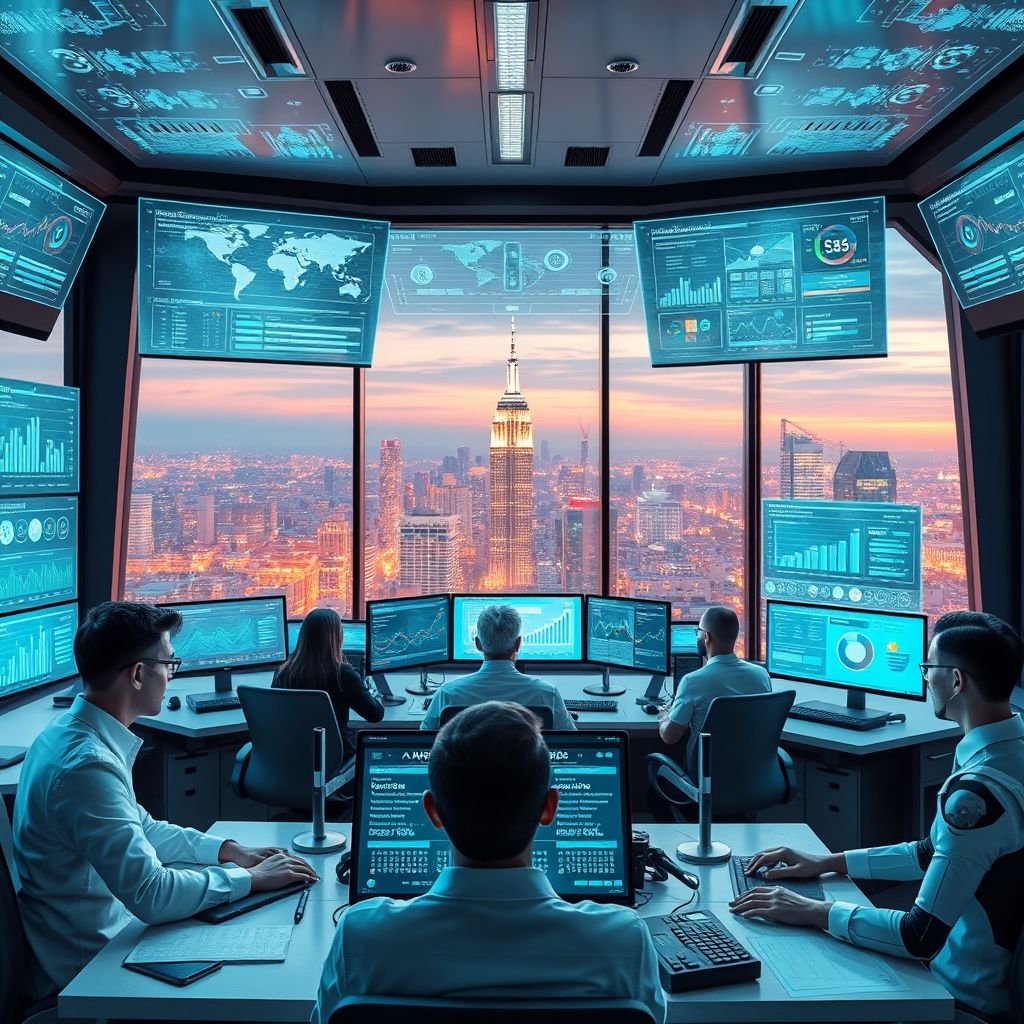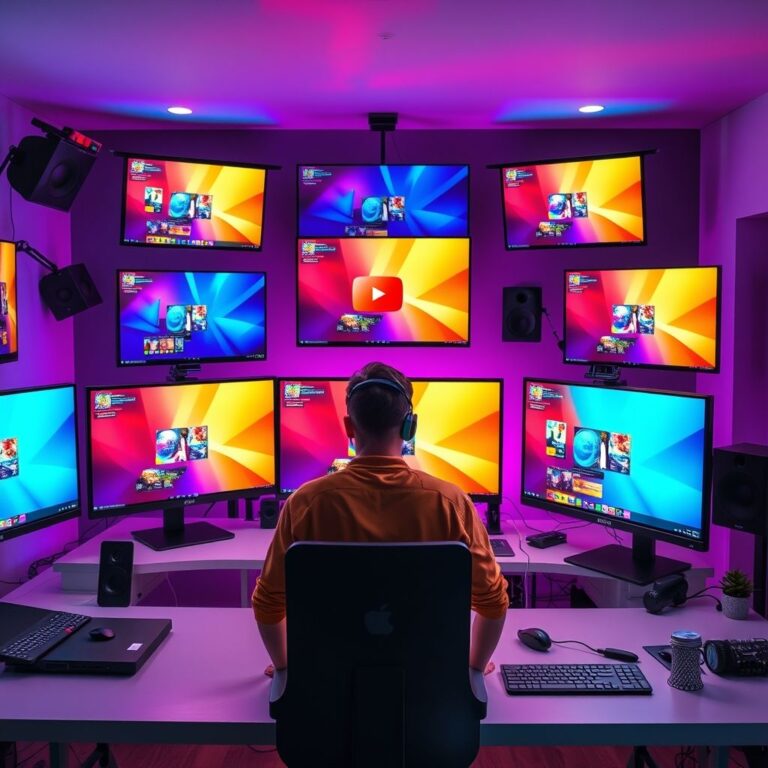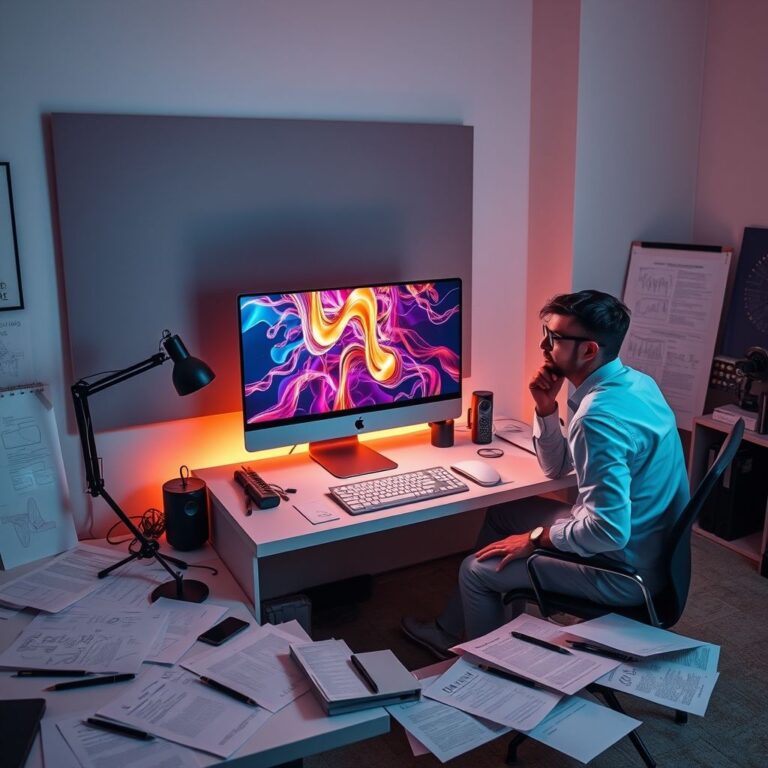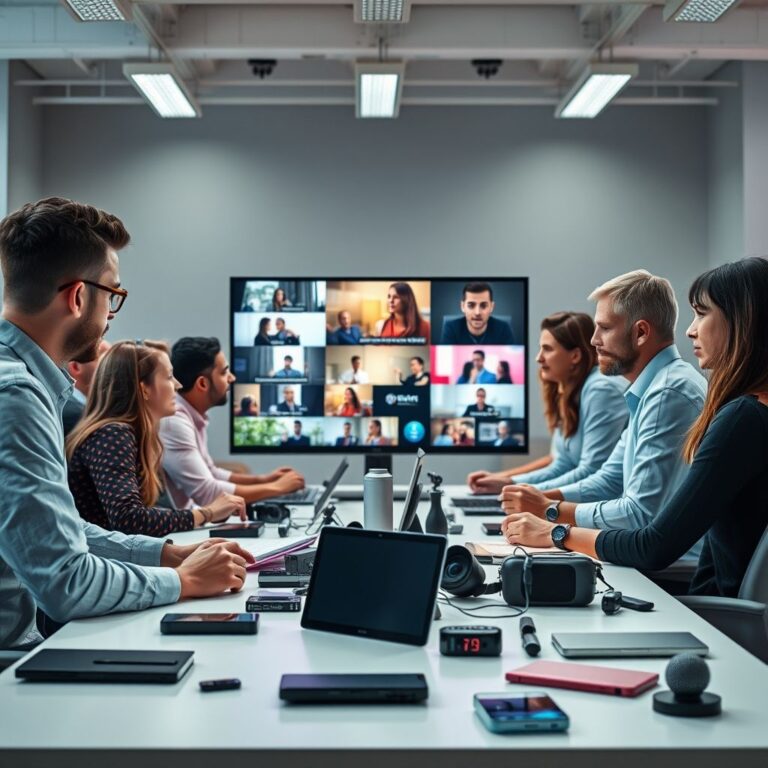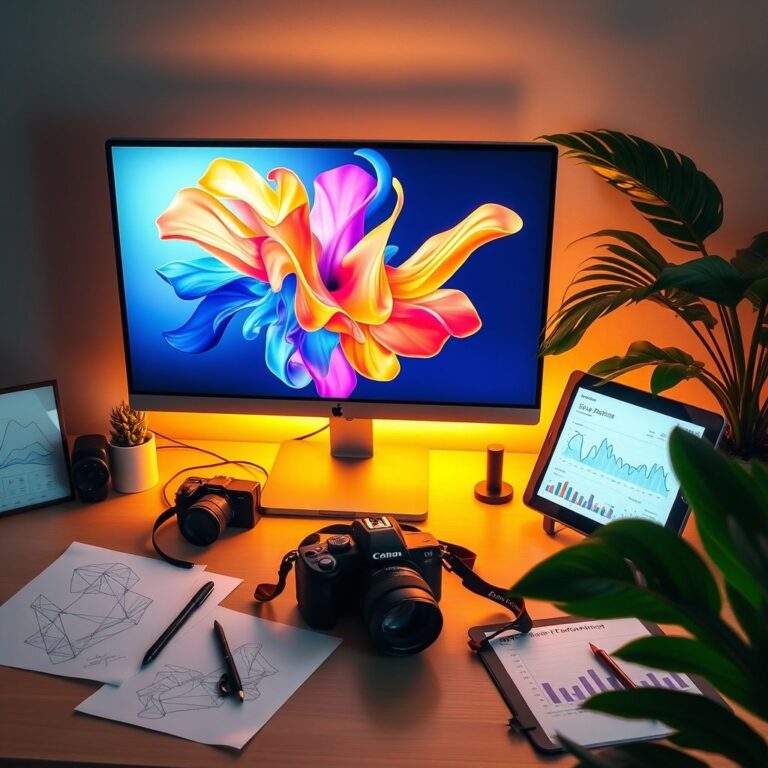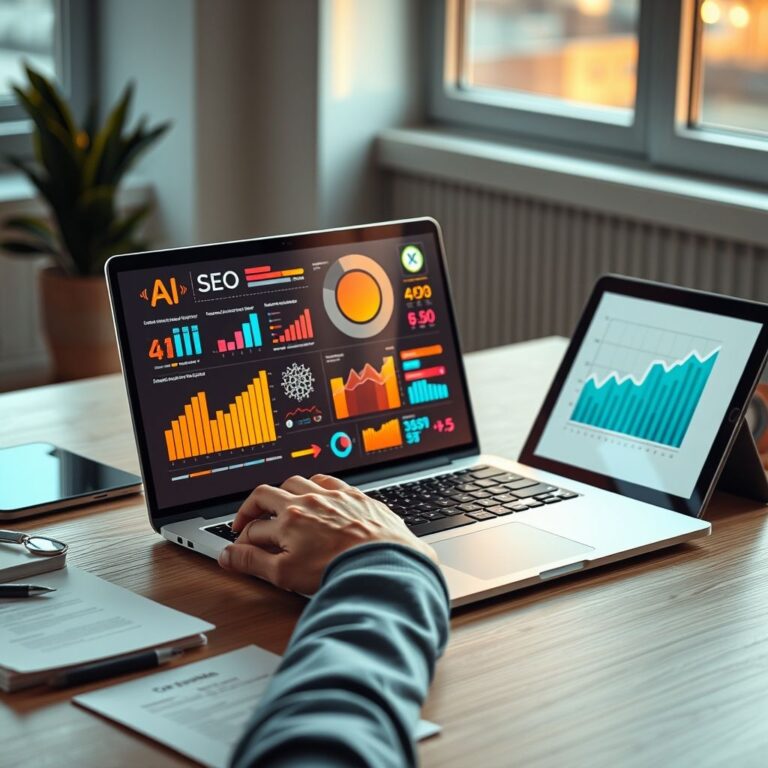How AI-Powered Production Is Transforming Marketing ROI in 2025
Imagine waiting weeks for a marketing video to be produced, only to face ballooning costs and a final cut that barely hits the mark. That’s the traditional video production struggle marketers have battled for years. But now, the game is changing fast. AI is surging into the scene, reshaping how videos are made and delivered.
With tools like Synthesia leading the charge, production delays and sky-high expenses are becoming relics of the past. Instead, brands enjoy lightning-fast turnaround times, hyper-personalized content, and remarkable cost savings—all while boosting engagement like never before.
This article dives into the hottest video trends for 2025, spotlighting AI-driven campaigns that aren’t just creative—they’re driving measurable ROI improvements. Curious how AI can transform your marketing strategy and supercharge results? Stick around to uncover what the future holds and how you can harness these breakthroughs now.
What 2025 Research Reveals About AI in Video Production
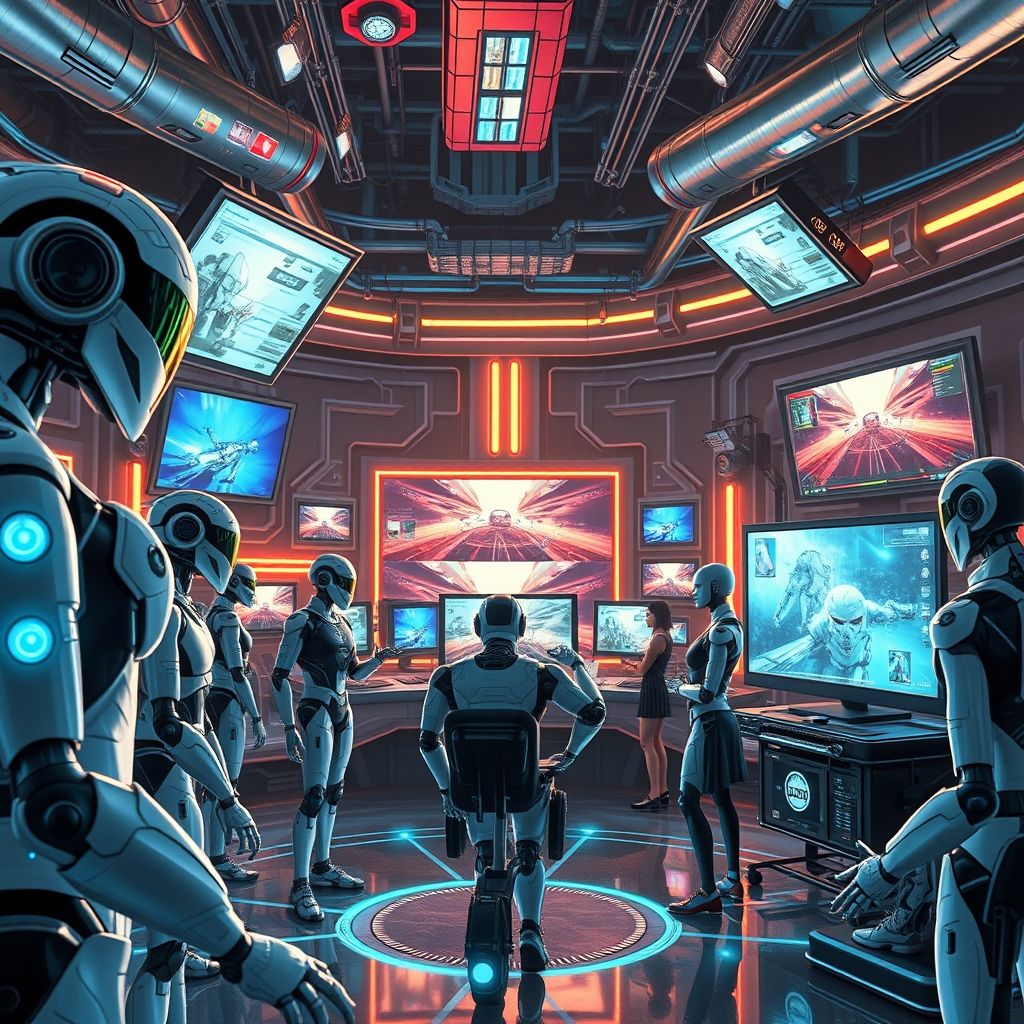
The integration of artificial intelligence into video production is reshaping the landscape of marketing content creation. In 2025, research points to AI tools like Synthesia and Pippit AI as pivotal drivers in accelerating timelines, reducing costs, and delivering highly personalized, engaging videos. These advancements are not only transforming how videos are produced but also enhancing the return on investment (ROI) for businesses of all sizes.
By leveraging AI capabilities, companies are tapping into new efficiencies and creative possibilities that were previously unimaginable, setting a new standard for quality and audience connection.
Accelerating Video Creation Timelines
Recent data shows that AI-powered platforms such as Synthesia have revolutionized video production schedules, reducing typical project timelines from months to mere minutes. This acceleration is largely due to AI-driven automation of script-to-video workflows, virtual actor generation, and scene assembly. Pippit AI complements this by providing rapid video editing and automation, enabling marketers to iterate and deploy campaigns swiftly while maintaining high production values.
Such speed translates directly into faster market testing and outreach, allowing businesses to stay agile and responsive to consumer trends.
Enhanced Production Quality with Virtual Actors and Advanced Tech
Virtual actors generated by AI technologies have grown increasingly realistic, enabling studios to create expressive, customizable characters without the logistical costs associated with human talent. Augmented reality (AR) and virtual reality (VR), coupled with cloud infrastructure, further elevate production quality by providing immersive environments and scalable rendering capabilities.
This convergence of technologies enhances storytelling possibilities, making video content more captivating and professional, which in turn drives greater viewer retention and brand appeal.
Cost Reduction and Sustainability Gains
AI streamlines many traditional production processes, from pre-production planning to post-production editing, which significantly lowers overall costs. By minimizing the need for physical sets, on-location shoots, and large crews, businesses save both time and money. Additionally, cloud-based workflows reduce hardware dependency, contributing to a smaller carbon footprint.
These efficiencies not only make video production more accessible to small businesses but also align with growing corporate priorities around sustainability and environmental responsibility.
Multi-Language Localization and Global Reach
Artificial intelligence platforms like ChatGPT and DALL·E 2 enable seamless multi-language video localization by rapidly generating culturally adapted scripts, voiceovers, and visuals. This capability expands the global reach of marketing campaigns by tailoring content to diverse audiences without the high costs traditionally associated with localization.
Marketers can efficiently launch region-specific videos that resonate better, improving engagement rates and supporting international growth strategies.
Boosting Engagement Through Personalized Dynamic Content
AI-driven personalization is a game changer for audience engagement. Dynamic video content that adapts to viewer preferences, behaviors, and demographics significantly increases relevance and emotional impact. Synthesia’s ability to generate individualized videos at scale allows brands to create highly targeted campaigns that speak directly to each segment’s interests.
Studies from 2025 reveal that personalized AI video campaigns can increase engagement metrics by up to 70%, driving higher conversion rates and ultimately enhancing ROI.
Examples of-Driven Video Campaignsing Real ROI
AI-powered video production is no longer a futuristic notion but a game-changer actively reshaping marketing strategies across industries. In 2025, brands harnessing AI tools like Synthesia have witnessed measurable gains not just in engagement but in conversion, cost efficiency, and customer loyalty. This section explores concrete examples showcasing how AI-generated videos are delivering substantial returns on investment by revolutionizing storytelling and personalization.
From tech to fashion to automotive sectors, AI-driven campaigns leverage unique capabilities such as hyper-personalized content, real-time interaction, and advanced 3D avatars to create immersive experiences that captivate and convert audiences at scale.
Tech Industry: Boosting Engagement and Conversion Rates
A leading software company integrated AI-generated tutorials and product demos featuring customizable avatars to engage users in real-time. By dynamically tailoring video content to individual user profiles, they reported a 40% uplift in engagement and a 25% increase in conversion rates within three months. The use of AI trimmed production timelines by 60%, enabling rapid iteration and more agile campaign testing—clear evidence of how AI cuts costs while enhancing performance.
Fashion Sector: Personalized Videos Strengthening Brand Loyalty
In fashion retail, personalized video lookbooks created with AI avatars allowed shoppers to see styling suggestions modeled on their preferences and body types. This immersive personalization resulted in a 30% growth in repeat customer purchases and a 15% higher average order value. By delivering unique content that resonated on a personal level, the brand fostered stronger emotional connections, translating into tangible loyalty and long-term value.
Automotive Campaigns: Interactive 3D Avatars Enhancing Viewer Experience
Automakers have pioneered the use of interactive real-time videos featuring advanced 3D avatars that guide viewers through vehicle features and customization options. These video experiences led to a 50% increase in lead capture and a notable reduction in showroom visits, highlighting the power of immersive AI video in the buyer’s journey. The engaging nature of these avatars made complex information accessible and memorable, boosting both interest and confidence among potential customers.
Actionable Insights from AI Video Campaigns
- Engagement uplift is significantly tied to personalized storytelling enabled by AI, which speaks directly to consumer preferences.
- Conversion rate improvements indicate that AI-generated video content meets audience needs faster and more effectively than traditional methods.
- Cost efficiencies arise from automation in video creation, reducing reliance on costly reshoots and extensive post-production.
- Enhanced brand loyalty stems from the emotional impact of customization and real-time interactivity, making customers feel valued and understood.
These examples highlight AI’s unique role in transforming video production from a costly, one-size-fits-all process into a dynamic, data-driven powerhouse that delivers measurable marketing ROI across diverse sectors.
Addressing Production Bottlenecks and Ethical Challenges with AI
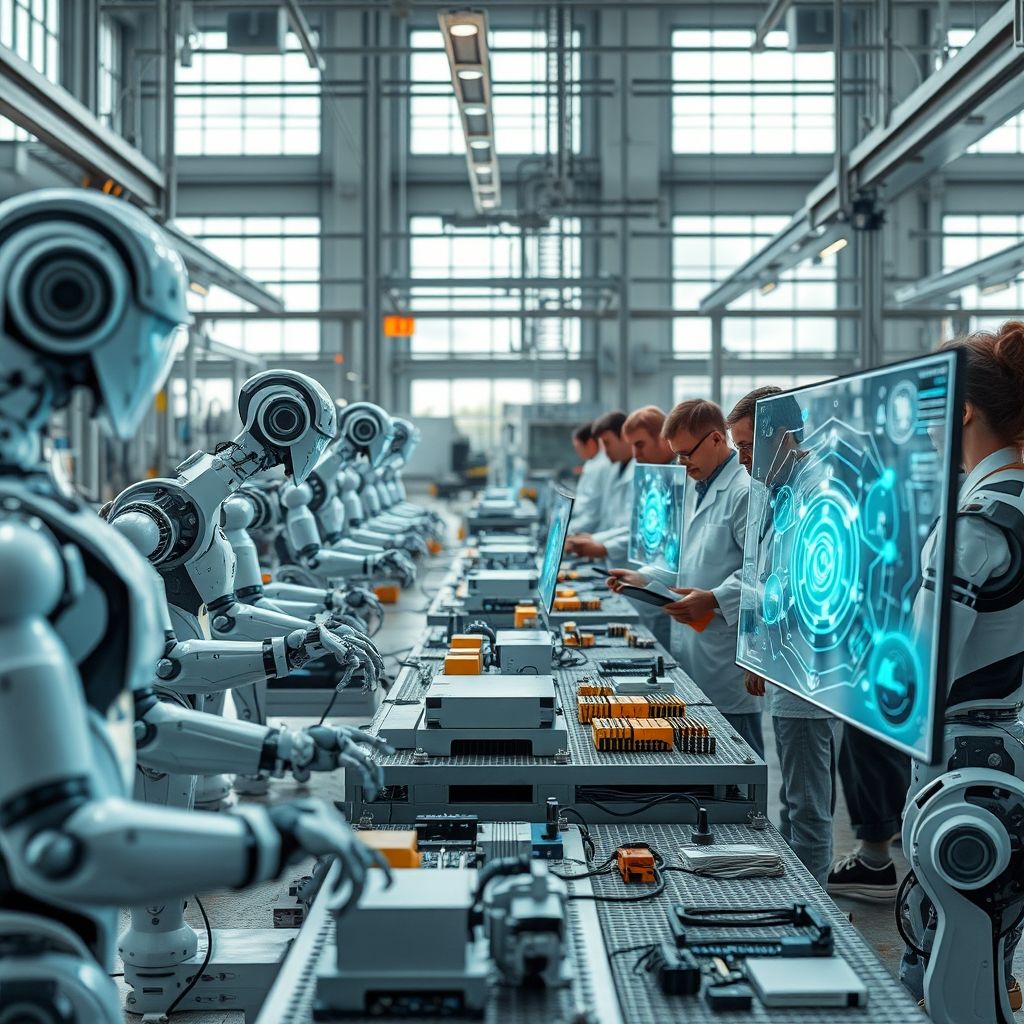
The rapid integration of AI technologies in video production is reshaping how brands overcome traditional operational challenges. By streamlining workflows, AI dramatically reduces the long timelines and resource bottlenecks that once hindered video campaigns. Yet, alongside these efficiencies, new ethical concerns and psychological hurdles emerge, particularly with AI-generated content that can sometimes unsettle viewers. This section explores how AI navigates these complexities while balancing automation and human creativity.
Understanding the nuanced impact of AI on production and audience reception is critical for marketers aiming to optimize return on investment without compromising authenticity or ethics.
Breaking Down Production Barriers
AI-driven tools like Synthesia enable video creators to bypass lengthy filming schedules by generating customizable virtual actors and environments. This automation slashes costs associated with studio time, crew, and on-location shoots, accelerating project delivery. For example, companies using AI-generated spokespersons saw project timelines cut by up to 60%, allowing more agile campaign rollouts and iterative testing.
Additionally, these technologies ease resource bottlenecks by reducing dependency on scarce talent availability. The result is a leaner, faster production process that frees creative teams to focus on strategy and storytelling rather than logistics.
Balancing Automation with Human Creativity
Despite automation’s benefits, maintaining genuine human creativity remains paramount to avoid robotic or overly polished outputs. The most successful campaigns blend AI efficiency with human direction, ensuring narratives feel authentic and relatable. Human oversight helps curate AI-generated content, infusing it with emotional nuance and cultural sensitivity that purely automated workflows might miss.
Brands that strike this balance often achieve higher engagement and viewer trust, which directly correlates to improved marketing ROI. Emphasizing creativity alongside AI efficiency empowers marketers to deliver compelling, original content at scale.
Ethical Considerations and Content Transparency
The growing sophistication of AI raises ethical questions around deepfake potentials and the authenticity of video representations. Viewers may feel misled if AI-generated characters are presented without disclosure, risking trust erosion. Transparency about AI usage in production becomes essential to uphold ethical standards and maintain audience confidence.
Brands should adopt clear content labeling and maintain open communication about AI’s role to preserve credibility. This practice supports responsible innovation while mitigating concerns about manipulation or deception.
Navigating the ‘Uncanny Valley’ Phenomenon
AI-generated virtual actors must contend with the “Uncanny Valley,” where near-human likenesses evoke viewer discomfort. This phenomenon can negatively impact engagement if the digital faces appear subtly off or overly synthetic. To address this, creators focus on refining facial expressions, voice modulation, and movement realism, or intentionally stylize avatars to avoid unsettling hyperrealism.
Understanding and respecting audience sensitivities helps marketers optimize AI-driven content for positive reception, ultimately supporting stronger emotional connections and better campaign outcomes.
Expanding AI Video Use Cases Beyond Traditional Industries
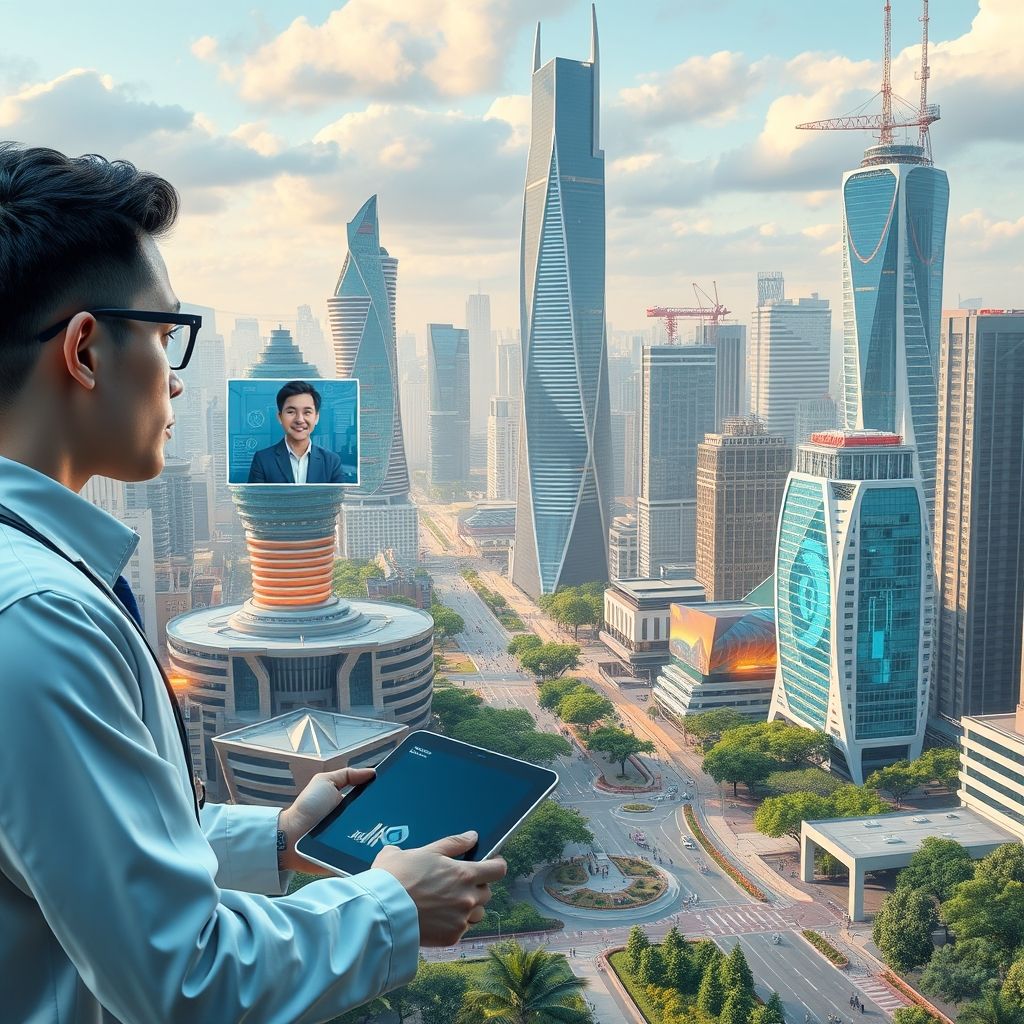
As AI-powered video production tools like Synthesia mature, their impact is extending far beyond traditional sectors such as entertainment and advertising. In 2025, we see a dynamic expansion into emerging fields and innovative applications that unlock fresh opportunities for engagement, education, and cost efficiency. These new use cases not only diversify how video content is created and consumed but also foster deeper connections across audiences previously underserved by conventional media approaches.
This section explores how educators, small businesses, software developers, and sectors like healthcare, real estate, and non-profits are harnessing AI video capabilities to revolutionize storytelling and communication—fueling stronger ROI through scalable and personalized content.
Educators Using AI for Scalable, Interactive Learning Videos
Education is rapidly adopting AI-driven video tools to create scalable, interactive learning environments. Teachers and trainers utilize platforms like Synthesia to produce engaging lessons with virtual instructors, multilingual subtitles, and adaptive content that matches learner pace and style. This approach not only reduces production time and costs but makes education more accessible worldwide.
For example, one online language school reported a 30% increase in student retention after integrating AI-generated personalized video modules, showcasing how tailored audiovisual content can enhance comprehension and motivation.
Small Business Adoption for Cost-Effective and Localized Marketing
Small businesses are leveraging AI video technologies to produce high-quality marketing content without the hefty price tag of traditional video shoots. AI allows them to create localized, culturally relevant ads quickly, addressing niche markets with customized messaging. This agility offers stronger engagement and measurable uplift in sales.
Reports show that AI-assisted video campaigns can reduce production costs by up to 70%, enabling startups and local businesses to compete with larger brands on visual storytelling and customer experience.
Developers Integrating AI Video into Apps and Platforms
Another emerging trend in 2025 is developers embedding AI video functionalities directly within apps and digital platforms. This integration enables real-time video personalization, customer support avatars, and interactive onboarding experiences. by streamlining video generation inside ecosystems, companies improve user engagement and retention metrics.
For instance, a fintech app implemented AI-generated tutorial videos that dynamically respond to user questions, resulting in a 40% decrease in support tickets and enhanced customer satisfaction.
Healthcare, Real Estate, and Non-Profits: New Frontiers for Storytelling
AI video tools are also pushing into healthcare, real estate, and non-profit sectors, transforming how these industries communicate complex information and inspire action. Healthcare providers use AI videos to explain treatment options in multiple languages, improving patient understanding and adherence.
In real estate, virtual tours powered by AI customization allow prospective buyers to visualize properties with personalized modifications, accelerating decision-making. Meanwhile, non-profits capitalize on AI-driven storytelling to craft compelling narratives that boost donor engagement and social impact visibility.
Technical and Creative Challenges in Human-AI Video Collaboration
The fusion of AI with human creativity in video production promises revolutionary possibilities, yet navigating this integration is far from straightforward. As 2025 unfolds, marketers and creators grapple with technical hurdles and nuanced creative limitations that shape how AI tools like Synthesia transform storytelling.
Understanding the balance between automated efficiency and authentic emotional resonance is crucial. Despite AI’s power to streamline production, the human touch remains indispensable in crafting deeply engaging narratives. Here, we explore the core challenges and emerging opportunities at the intersection of AI innovation and human artistry.
Limits of Emotional Storytelling with AI-Generated Content
Though AI excels in generating polished visuals and replicating realistic avatars, it often falls short in capturing subtle emotional depth. Empathy, cultural context, and nuanced human experiences are difficult for AI to fully emulate, which can result in videos that feel somewhat sterile or scripted.
Campaigns relying solely on AI-generated content may achieve scale but risk losing audience connection. Studies reveal that videos with identifiable human elements—such as spontaneous expressions or imperfect storytelling—consistently yield higher engagement and recall. Thus, emotional storytelling remains a domain where human creativity holds distinctive advantage even as AI assists.
Challenges in Seamless Integration of AI Editing Suites and Cloud Infrastructure
Technically, integrating AI-driven editing tools with existing cloud-based workflows presents numerous obstacles. Compatibility between platforms, data transfer speeds, and security protocols often create bottlenecks, slowing down production pipelines despite automation promises.
Moreover, ensuring real-time collaboration across geographies demands robust, low-latency infrastructures. Many organizations struggle with syncing AI tools embedded in cloud environments with traditional editing suites, leading to fragmented workflows that undercut efficiency gains.
Importance of Simple AI Interfaces That Empower Rather Than Replace Creators
The design of AI interfaces plays a pivotal role in adoption. Overly complex or opaque tools alienate creators, while intuitive interfaces that enhance rather than overshadow human input foster trust and experimentation. The future of AI in video production lies in making technology a seamless extension of creative processes.
For example, Synthesia’s emphasis on user-friendly controls allows marketers to customize AI-generated avatars and scripts without losing creative control. Empowering creators with flexible AI tools encourages innovation rather than resistance.
Future Opportunities for Co-Creative Workflows Combining Human Intuition and AI Efficiency
The next evolution in video production points to co-creative workflows where AI handles repetitive, time-consuming tasks and humans focus on inventiveness and emotional nuance. This synergy maximizes ROI by cutting costs and accelerating timelines without sacrificing storytelling impact.
Looking ahead, emerging frameworks will support collaborative ideation sessions between AI and human teams, enabling iterative refinements grounded in both data-driven insights and intuitive artistry. As AI evolves, the lines between automated generation and human creativity will blur, unleashing new forms of dynamic, engaging video content.
How to Leverage AI-Powered Video Production for Your Marketing Strategy
Integrating AI-powered video production into your marketing strategy unlocks tremendous potential to boost engagement and maximize ROI. The key lies in choosing the right tools, balancing personalization with scalability, and continually refining campaign performance without sacrificing authenticity. Whether you’re a small business or a large enterprise, a thoughtful, adaptable approach can transform how your brand connects with audiences in 2025.
This section offers practical steps to navigate the evolving AI video landscape—from selecting technology that aligns with your goals to preparing your team to innovate ethically and creatively with AI-driven workflows.
Selecting the Right AI Tools for Your Business Size and Goals
Start by clearly defining your marketing objectives and audience needs. Small businesses might prioritize user-friendly, cost-effective platforms like Synthesia that offer customizable templates and multilingual support. Larger companies could invest in enterprise solutions with advanced analytics and integration capabilities to support complex campaigns.
Ask yourself:
- Does the AI tool simplify video creation while maintaining quality?
- Can it scale output without escalating costs disproportionately?
- Does it offer robust analytics to track viewer engagement and conversion?
Trial periods and demo campaigns can provide hands-on insight into which technology fits best before committing significant resources.
Blending Personalization and Scalability Without Losing Authenticity
AI enables dynamic video personalization at scale—customizing content based on user data such as behavior, demographics, or preferences. To keep authenticity intact, focus on consistent brand voice and storytelling frameworks your AI tool can adapt rather than replacing genuine human elements wholesale.
For example, Synthesia-powered campaigns can create tailored videos for different customer segments by swapping avatars, languages, or messaging nuances without reshooting footage. This approach saves time and budget while maintaining a relatable, personalized experience that feels genuine rather than robotic.
Measuring and Optimizing AI Video Campaign Performance
Leverage built-in analytics to monitor key performance indicators like watch time, click-through rates, and conversion metrics. Using this data, adopt a test-and-learn approach—adjust scripts, visuals, or personalization triggers based on what drives engagement.
Integrating your AI video platform with CRM and marketing automation tools helps correlate video interactions with sales and customer behavior, providing a direct view of ROI. Regular performance reviews enable you to refine campaigns dynamically in response to audience feedback and market trends.
Preparing Teams to Adapt Creatively and Ethically to AI-Driven Workflows
Empower your marketing and creative teams with training on AI video technologies and emerging best practices. Encourage a culture of experimentation where human creativity partners with AI efficiency to push content innovation.
At the same time, establish ethical guidelines around content accuracy, transparency, and data privacy. Clear policies help maintain trust with audiences and ensure AI tools enhance rather than undermine your brand’s integrity.
By fostering adaptability and critical thinking, your team can harness AI’s strengths while preserving the creativity and authenticity that resonate deeply with customers.
Conclusion
As we navigate the transformative landscape of video production in 2025, AI-powered tools like Synthesia prominently stand out by slashing production costs and timelines while significantly enhancing personalization and viewer engagement. This revolution is not just about efficiency—it’s a strategic evolution in how brands connect creatively and ethically with their audience.
Key takeaways include:
- Cost and time savings that unlock iterative creativity and faster campaign deployment.
- Personalized videos that boost engagement through tailored messaging at scale.
- Emerging challenges around ethical use and creative authenticity that marketers must thoughtfully address.
The rapid pace of AI innovation means those waiting on the sidelines risk falling behind. Embrace experimentation with AI video tools customized for your unique marketing goals—whether it’s creating dynamic content, enhancing storytelling, or optimizing ROI measurement. Stay curious and proactive in exploring these evolving trends to transform your campaigns into compelling, results-driven experiences.
Begin your AI video journey today, and harness the future of marketing creativity and efficiency with confidence. Success favors the bold, and the tools are at your fingertips.
